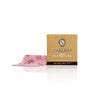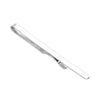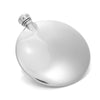![]()
Wearing cufflinks well is about choosing the right shirt, using the correct fastening, and keeping the look restrained. French cuffs remain the classic route, yet there are practical ways to use cufflinks with shirts that have buttons. The guidance below keeps to traditional standards while explaining modern options clearly. If you’re new to cufflinks, start with our Ultimate Guide to Cufflinks for a complete introduction to styles, materials, and etiquette.
Shirt Types and Your Options
| Shirt cuff type | Can it take cufflinks? | How it works | Formality |
|---|---|---|---|
| French (double) cuff | Yes | Fold back, align holes, insert cufflink, secure | Formal and evening-appropriate |
| Convertible cuff | Yes | Button or cufflink via an extra hole beside the button | Business to smart |
| Barrel (regular button) cuff | Not by default | Requires tailoring into a convertible cuff, or use of adapters | Smart casual at best |
The most reliable route is simple. French cuffs if the occasion is formal. Convertible cuffs when you want flexibility for the working day.
French cuffs are designed for cufflinks. Convertible cuffs include a secondary buttonhole so you can remove the button and use a cufflink instead. Regular button cuffs do not accept cufflinks without modification, although you can use adapters or tailoring if you want the look without changing shirts.
How to Wear Cufflinks with French Cuffs
- Fold the cuff back on itself so the two raw edges meet cleanly.
- Align the four holes. Precision here keeps the cuff square on the wrist.
- Insert the cufflink from the outside so the face sits outward when your arms rest by your sides.
- Secure the mechanism. Toggle backs should sit flat. Chain links should drape without twisting.
Keep the line clean. The link sits parallel to the cuff, the edges meet evenly, and nothing tugs the fabric out of shape.
How to Wear Cufflinks with a Convertible Cuff
Convertible cuffs look like regular single cuffs, but include a dedicated hole for cufflinks beside the button. To switch, simply align the cufflink holes, slide the link through, and close it as you would on a French cuff. The benefit is practical: you can dress the same shirt up or down without changing the cut.
How to Wear Cufflinks with a Shirt that Has Buttons
There are two legitimate routes if your shirt has ordinary barrel cuffs with a single button fastening. The first is to ask a tailor to add a through-hole opposite the existing one, effectively turning the cuff into a convertible cuff. The second is to use cufflink adapters that pass through the buttonhole to mimic the look of a link. Adapters are a convenience rather than a purist solution, but they work for occasional wear.
Purists prefer a true French or convertible cuff. Adapters are fine for travel or occasional use, but they will never feel as secure or as tidy as a proper cuff.
If you do choose the adapter route, insert the adapter through the buttonhole from the outside, seat it snugly, then attach the cufflink. Ensure the cuff edges meet and the assembly lies flat. If the cuff is too tight or the fabric pulls, switch to a tailored solution instead.
Pairing Cufflinks with Any Shirt: Proportion and Finish
- Proportion. Heavier cloths and wider cuffs suit larger links. Finer shirting prefers slimmer profiles.
- Finish. Sterling silver is the most versatile for offices in London. Yellow gold suits warmer palettes and evening settings.
- Consistency. Keep metals aligned with your watch case and belt buckle for a coherent line.
Silver complements cool palettes and navy suits. Yellow gold pairs naturally with warmer cloth and evening settings.
Common Mistakes to Avoid
- Forcing links through a single button cuff. This stretches fabric and looks untidy. Convert the cuff or use an adapter briefly.
- Misaligned holes. Twisted or pulling cuffs ruin the line of the sleeve. Take a moment to align before securing.
- Ignoring fit. Shirt sleeves should show a clean edge under the jacket, just enough to display the link.
Final Word
The rule is straightforward. Choose the right cuff, set the link cleanly, and keep the rest of the look in balance. French for ceremony. Convertible for flexibility. Tailoring if you must adapt a favourite shirt. Anything else is a shortcut that shows.
To explore cufflinks in greater depth — from craftsmanship and engraving to the traditions behind them — visit The Ultimate Guide to Cufflinks.





